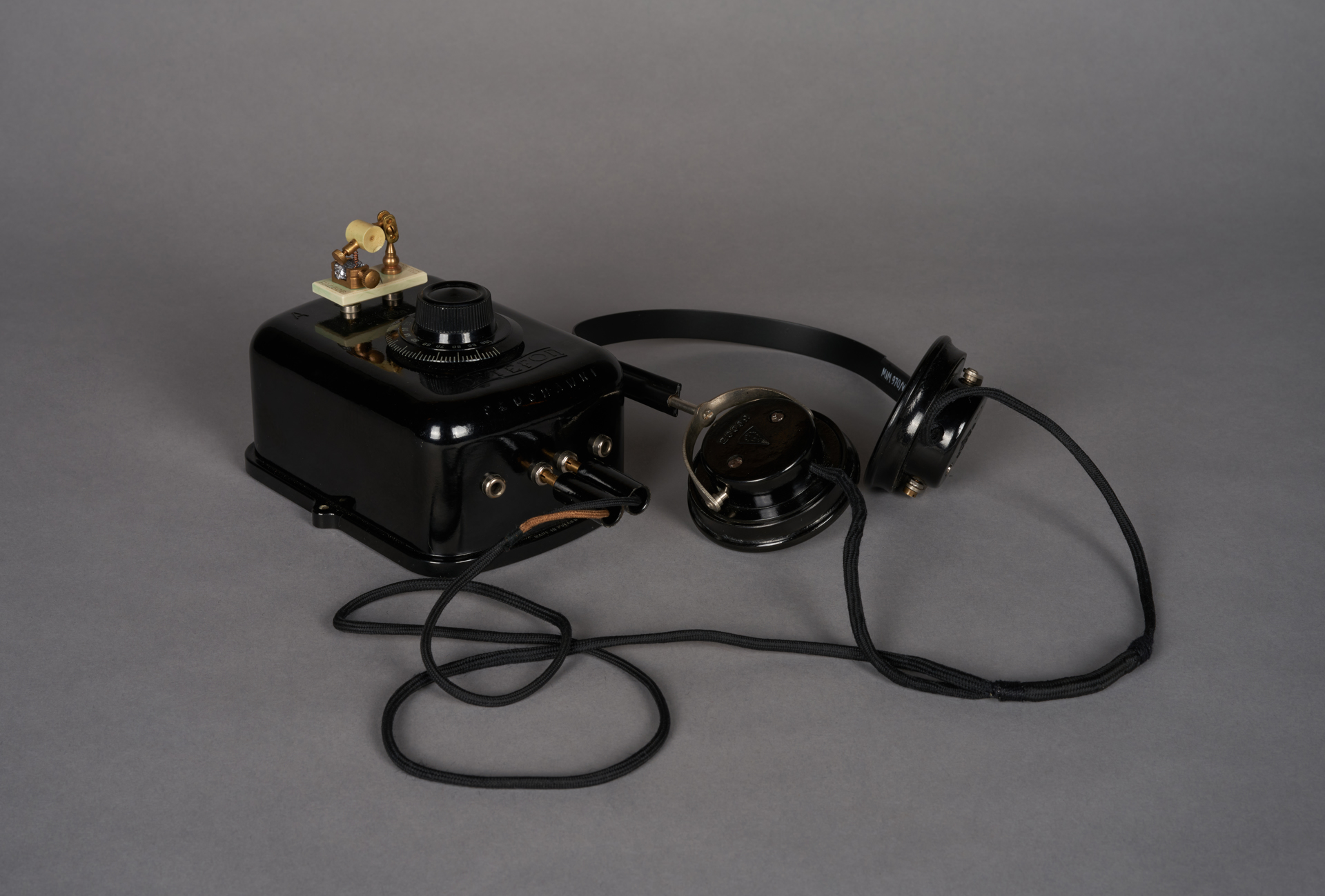
Detefon DT2
Krakowskie Zakłady Elektroniczne Telpod T7,Creator
Krakowskie Zakłady Elektroniczne Telpod T7
Time and place of creation
Place:
Poland
The Detefon DT2 was manufactured after the end of World War II by Krakowskie Zakłady Elektroniczne Telpod (T-7). It is a continuation of the pre-war Detefon devices in an unmodified form. Telpod’s product range at the end of the 1940s and beginning of the 1950s mostly included radio parts (potentiometers and switches), radio technology accessories (knobs, plugs or earphone cords) and small electrical equipment. The manufacture of the range was based on the assembly lines of the remains of Telefunken, which had been nationalised after the War, and were moved from Grodzka 13 to Zabłocie after they were taken over by Telpod.
The Detefon DT2 allows the reception of radio waves in short, medium, and long wave bands. The receiver is enclosed in a Bakelite housing to which a crystal detector is attached. On the bottom of the receiver there is a schematic, pictorial operation manual.
In 1929, Polskie Radio SA (the Polish Radio Company), driven by the desire to reach the remotest places in Poland with its programming, initiated a process to design a cheap and functional radio receiver. The first result of the work aimed at fulfilling its expectations was the Detefon detector receiver developed by engineers Wilhelm Rotkiewicz and Czesław Rajski at the Państwowa Wytwórnia Łączności (PWŁ), which had been operating from 1927 and was later transformed into the Państwowe Zakłady Tele-I Radiotechniczne (PZT).
The Detefon is one of early types of radio devices and used the ability of lead sulphide crystals to detect radio waves, hence the widely used name “crystal radio” or “crystal detector”. Radio waves captured by the antenna induced an alternating current in it, which was rectified as it passed the crystal detector. Electrical impulses were then turned into vibrations of the membrane and heard as sound in the earphone. It was only possible to connect two sets of earphones, which limited the number of people who could listen to the radio at the same time. The device required no external power supply, which was its great advantage as the majority of the territory of Poland at the time did not yet have access to electricity. Sales of the Detefon devices in December 1930 began with a promotional campaign with the slogan: “All of Poland has a Detefon”. The relatively low cost of purchase of the Detefon was accompanied by having to pay the monthly radio subscription fee at a fraction of the amount paid by users of stationary radio receivers.
Author: Filip Wróblewski
Detefon DT2
Krakowskie Zakłady Elektroniczne Telpod T7,Creator
Krakowskie Zakłady Elektroniczne Telpod T7
Time and place of creation
Place:
Poland











